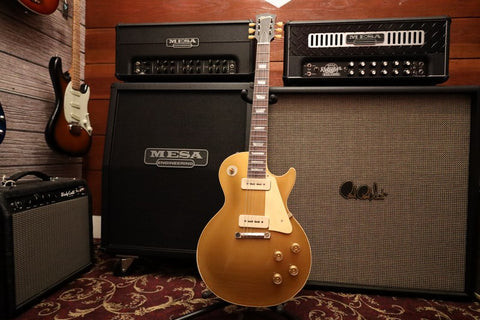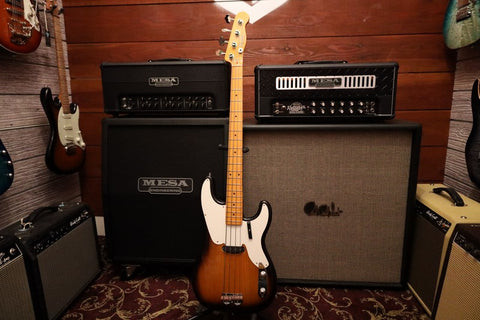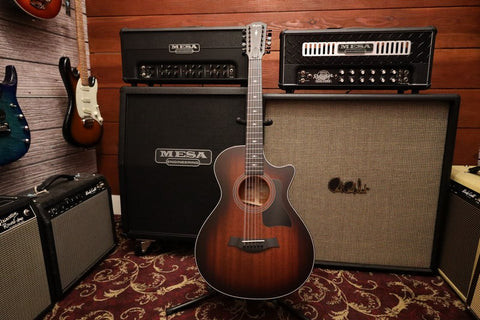The guitar stands as a cornerstone of modern music, a versatile instrument beloved across genres and cultures. At the heart of its expressive voice lie the guitar strings. These vibrating strands are the soul of the instrument, each one capable of producing a spectrum of tones and sounds that inspire musicians and captivate listeners worldwide.
When considering a guitar, a fundamental question arises for both beginners and seasoned players: How Many Strings Are On A Guitar? While the iconic image of a six-string guitar is prevalent, the reality is that guitars come in a fascinating array of string configurations, each designed to offer unique sonic possibilities. Let’s delve into the world of guitar strings and explore the variations that shape the sounds we love.
Understanding the Guitar and Its Strings
A guitar is fundamentally a stringed instrument, characterized by a neck and a body, designed to resonate sound when its strings are played. Most commonly, a guitar features six strings. These strings are typically crafted from materials like nylon or steel, each tuned to a distinct pitch to produce a wide range of musical notes. By plucking or strumming these strings, musicians create melodies, harmonies, and rhythms that form the foundation of countless musical compositions.
While the six-string configuration is the most familiar, the guitar family extends far beyond this standard. You’ll find guitars with seven, eight, nine, twelve, or even more strings. These variations are not mere novelties; they are instruments tailored for specific musical styles and sonic textures, expanding the expressive range of the guitar.
Exploring Different Guitar Types
To truly understand the variations in string numbers, it’s essential to recognize the primary types of guitars:
- Acoustic Guitars: Resonating sound naturally through a hollow body.
- Electric Guitars: Utilizing pickups to amplify string vibrations electronically.
- Classical Guitars: Distinguished by nylon strings and a warm, mellow tone.
- Bass Guitars: Designed for lower frequencies, providing rhythmic and harmonic foundation.
Each guitar type, while sharing the fundamental principle of vibrating strings, offers a unique sonic palette and playing experience. The number of strings is a crucial factor in defining these characteristics.
 Image of acoustic guitars showcasing different body styles, highlighting the natural resonance of acoustic instruments, optimized for guitar enthusiasts learning about acoustic guitar types.
Image of acoustic guitars showcasing different body styles, highlighting the natural resonance of acoustic instruments, optimized for guitar enthusiasts learning about acoustic guitar types.
Electric Guitars: Strings Amplified
Electric guitars are typically equipped with metal strings, a key element in their sound production. These metal strings interact with magnetic pickups located beneath them. When a string vibrates, it disrupts the magnetic field, and this disturbance is converted into an electrical signal, which is then amplified. This process allows electric guitars to achieve high volumes and sustain notes for extended periods, contributing to their prominent role in genres like rock, metal, blues, and beyond. The solid body construction often associated with electric guitars further enhances sustain and reduces unwanted feedback.
Acoustic Guitars: Natural Resonance
Acoustic guitars, in contrast to their electric counterparts, rely on their hollow body construction for sound amplification. The vibration of the strings resonates through the soundhole and within the guitar’s body, creating a rich, natural acoustic sound. This inherent resonance makes acoustic guitars ideal for genres like folk, country, pop, and fingerstyle guitar. Acoustic guitars commonly feature six strings, but 12-string versions are also popular, offering a fuller, chorus-like sound.
Classical Guitars: The Warmth of Nylon
Classical guitars are distinguished by their use of nylon strings. Unlike the bright, ringing tones of steel strings, nylon strings produce a softer, warmer, and more mellow sound. This tonal quality is particularly favored in classical music, flamenco, and fingerstyle genres where nuanced and delicate sounds are desired. The wider neck and flat fretboard of classical guitars also cater to the fingerpicking techniques common in these styles.
 Image of a classical guitar close-up, emphasizing the nylon strings and wide fretboard, ideal for illustrating the characteristics of classical guitars for musicians.
Image of a classical guitar close-up, emphasizing the nylon strings and wide fretboard, ideal for illustrating the characteristics of classical guitars for musicians.
Bass Guitars: Laying Down the Low End
Bass guitars occupy a unique space in the guitar family, typically featuring four strings tuned to lower pitches than standard guitars. Their primary role is to provide the rhythmic and harmonic foundation in music. Bass guitars deliver the low-end frequencies that drive the groove and underpin the harmonic structure in genres ranging from rock and pop to jazz and funk. While four strings are standard, five and six-string bass guitars are also used to extend the lower range and offer greater versatility.
The Standard Six-String Guitar: A Timeless Design
When most people think of a guitar, the image that comes to mind is the standard six-string guitar. This configuration is more than just a popular choice; it’s a design that has proven its versatility and musicality across centuries and genres. The six-string layout is not arbitrary but rather a carefully balanced system that offers a broad range of notes and chords, making it adaptable to a vast spectrum of musical styles.
The Anatomy of a Standard Six-String Guitar
The standard six-string guitar, often referred to as the Spanish guitar, is typically tuned to E, A, D, G, B, and E, progressing from the lowest (thickest) string to the highest (thinnest). This standard tuning is foundational to Western music theory and provides a logical and accessible framework for guitarists. It allows for the creation of deep bass lines, melodic leads, and rich chords all within a single instrument.
Why Six Strings Became the Norm
The prevalence of the six-string guitar stems from its remarkable versatility. Six strings provide a comprehensive range of pitches commonly utilized in Western music. This range allows guitarists to play lead melodies, rhythmic accompaniments, and even bass lines, making it a self-sufficient instrument for solo performers and a vital component in ensembles.
- Broad Sonic Spectrum: Six strings effectively cover both lower and higher frequencies, accommodating a wide musical range.
- Balance of Complexity and Playability: The six-string layout strikes a balance between musical complexity and ease of learning, making it accessible to beginners while offering ample depth for advanced players.
- Genre Universality: From rock and blues to pop and classical, countless genres have embraced the six-string guitar, highlighting its universal appeal and adaptability.
The enduring popularity of the six-string guitar lies in its perfect blend of musical utility and cultural significance. It is an instrument deeply ingrained in our musical traditions, a symbol of musical expression and creativity.
Variations in String Numbers: Expanding Sonic Horizons
While the six-string guitar holds a central position, the world of guitars is rich with variations designed to cater to specialized musical needs and player preferences. Exploring different guitar types with varying string numbers reveals a spectrum of sonic possibilities, each configuration offering a unique playing experience and tonal character.
 Image showcasing an eight-string guitar, emphasizing its extended neck and additional strings, suitable for illustrating extended range guitars in metal and progressive music.
Image showcasing an eight-string guitar, emphasizing its extended neck and additional strings, suitable for illustrating extended range guitars in metal and progressive music.
Seven-String and Eight-String Guitars: Delving into Lower Registers
The seven-string guitar expands upon the standard six-string by adding a lower string, typically tuned to B. This addition extends the guitar’s bass range, enabling deeper, heavier sounds. Seven-string guitars have gained significant traction in genres like metal, progressive rock, and jazz, where musicians seek a broader sonic palette and the ability to play lower riffs and complex harmonies.
Eight-string guitars take this concept further, adding yet another low string, often tuned to F# or E. This extended range opens up even greater possibilities for creating dense, layered compositions and exploring extremely low frequencies. Eight-string guitars are prominent in djent, progressive metal, and experimental music, pushing the boundaries of guitar tonality.
Twelve-String Guitars: The Chorus Effect
For a richer, more resonant sound, the twelve-string guitar offers a unique sonic texture. Instead of single strings, it utilizes pairs of strings known as courses. Each course consists of two strings played together, either in unison or an octave apart. This doubling effect creates a natural chorus-like sound, adding shimmer, fullness, and complexity to chords and melodies. Twelve-string guitars are beloved in folk, rock, country, and pop music for their lush and expansive sound. However, the doubled strings require greater finger strength to play and can present a steeper learning curve.
Alternate Tunings: Reshaping the Guitar’s Voice
Beyond the number of strings, the tuning of a guitar significantly impacts its sound and playability. Alternate tunings involve changing the standard pitches of one or more strings, opening up a world of sonic possibilities and inspiring new musical approaches. Tuning is the process of assigning specific pitches to each string, establishing the fundamental tonal framework for playing and composing.
The Foundation of Standard Tuning
Stringed instruments like the guitar are designed to resonate at specific frequencies. Tuning aligns these frequencies to desired musical notes, typically within a recognized musical system. Standard tuning (E, A, D, G, B, E) provides a familiar and logical musical scale for guitarists, facilitating chord shapes, scales, and melodies that are fundamental to many musical styles.
Unleashing New Sounds with Alternate Tunings
Alternate tunings empower guitarists to experiment with diverse sounds and techniques. By altering the pitch of strings, players can access new chord voicings, extended harmonic ranges, and easier pathways to certain intervals and scales. Some alternate tunings enable open chords to be played simply by strumming all open strings, fundamentally changing the “landscape” of the fretboard.
- Dropped Tunings: Lowering the pitch of the sixth string (e.g., Drop D) facilitates playing power chords with simplified fingerings, common in rock and metal.
- Open Tunings: Tuning the guitar to create a chord when strummed open (e.g., Open G, Open D) is popular in blues, slide guitar, and folk, allowing for resonant open chords and slide techniques.
- Modal Tunings: Tunings designed to emphasize specific musical modes (e.g., DADGAD) provide unique harmonic flavors and melodic possibilities, often used in Celtic and fingerstyle guitar.
Each alternate tuning not only modifies the available pitches but can also inspire different stylistic choices and songwriting approaches. From the gritty growl of slide guitar in Open G to the intricate fingerpicking patterns enabled by DADGAD, alternate tunings remain a vital source of creative exploration for guitarists across all genres.
Historical and Traditional Guitars: Echoes of the Past
The guitar’s evolution is deeply intertwined with its rich history, shaped by diverse cultures and eras. This historical journey has profoundly influenced the number of strings found on modern guitars. Understanding the traditional and historical roots of the guitar is crucial to appreciating why the six-string configuration became dominant.
Tracing Historical String Variations
The ancestors of the guitar, including instruments like the lute, vihuela, and medieval gittern, featured varying numbers of strings, typically ranging from four to ten or more. The emergence of the six-string guitar, largely attributed to Spain in the 16th century, marked a pivotal shift. Its versatility and richer harmonic potential led to its widespread adoption, eventually establishing it as the standard.
Cultural and Temporal Influences on String Use
Guitars and related stringed instruments have played a central role in music-making globally, and their string arrangements reflect the musical styles and cultural preferences of their time. For example, the Baroque guitar often had nine or ten strings arranged in pairs (courses), while the Renaissance guitar was typically a four-course instrument. Traditional 12-string guitars, with their doubled strings, have roots in Mexican and other folk music traditions.
- European Influence: The introduction of the sixth string in the 1700s in Europe broadened tonal possibilities and gained widespread acceptance.
- Middle Eastern Origins: Early plucked instruments in the Middle East often had fewer strings and were played with a plectrum, influencing the development of early European stringed instruments.
- Global Stringed Instrument Traditions: Instruments like the African kora with up to 21 strings and the Chinese guqin demonstrate that the guitar’s development was part of a broader global evolution of stringed instruments, each culture contributing unique string configurations and playing techniques.
Exploring the historical and traditional backgrounds of the guitar illuminates not only the “how many” behind the strings but also enriches our appreciation for the instrument’s diverse sonic heritage and ongoing evolution.
 Image showcasing a historical guitar, emphasizing its ornate design and potentially different string configuration compared to modern guitars, ideal for illustrating the historical evolution of the guitar.
Image showcasing a historical guitar, emphasizing its ornate design and potentially different string configuration compared to modern guitars, ideal for illustrating the historical evolution of the guitar.
The Impact of String Material and Construction on Sound
Guitar strings are not merely vibrating wires; they are meticulously crafted components that profoundly shape the instrument’s tone. Understanding how different string materials influence sound production is essential for guitarists seeking to optimize their instrument’s voice. Let’s explore the tonal contrasts between metal and nylon strings and how string construction further refines the guitar’s sonic character.
Metal vs. Nylon: A Tale of Two Tones
The choice between metal and nylon strings is often dictated by musical genre and desired tonal qualities. Metal strings, typically made from steel or nickel alloys, produce a bright, articulate, and resonant tone. This brilliance makes them well-suited for genres like rock, country, folk, and blues, where clarity and projection are valued. The higher tension of metal strings contributes to their crisp sound and pronounced harmonics.
Nylon strings, in contrast, offer a warmer, mellower, and more rounded tone. Their softer material and lower tension result in a gentler sound, rich in overtones. Nylon strings are the hallmark of classical and flamenco guitars, favored for their nuanced tonal palette and suitability for delicate fingerstyle playing.
Material Science: Refining Acoustic Quality
The science of string materials extends beyond the basic metal vs. nylon dichotomy. Alloys and composite materials used in string construction further shape the sonic landscape. For instance, phosphor bronze strings deliver a warm, deep tone with a smooth feel, popular among acoustic guitarists seeking a “woody” and resonant sound.
Coated strings, a technological advancement, not only extend string lifespan but also subtly alter tonal brightness and sustain. Similarly, string gauge, or thickness, plays a significant role, influencing volume, sustain, and playability. Heavier gauges generally produce a fuller, louder sound with increased sustain, while lighter gauges offer easier playability and a brighter tone.
In essence, string material and construction are fundamental in shaping a guitar’s character and playability. From the twang of steel strings on an electric guitar to the soothing warmth of nylon strings on a classical guitar, the strings’ properties are integral to the art of guitar music.
- Metal strings: Bright, articulate tone; higher tension; suitable for rock, country, folk, etc.
- Nylon strings: Warm, mellow tone; lower tension; favored for classical and flamenco.
- Alloys and composites: Fine-tune tone and feel (e.g., phosphor bronze).
- Coated strings: Affect tone and increase lifespan.
- String gauge: Influences volume, sustain, and playability.
Guitar Genres and String Preferences: Matching Strings to Style
The diversity of guitars mirrors the vast landscape of musical genres. Across different styles, the number of strings on a guitar plays a crucial role in shaping the sound and playability preferred by musicians. Genre conventions often dictate the types of guitars and, consequently, the number of strings commonly used.
Classical and Flamenco: Tradition and Six Strings
Classical and flamenco guitarists predominantly adhere to the traditional six-string nylon-string guitar. This setup is deeply rooted in tradition and ideally suited for the intricate melodies, complex fingerpicking techniques, and nuanced dynamics characteristic of these styles.
Rock and Metal: Expanding the Range
In rock and metal, guitarists often push beyond the boundaries of the six-string standard. Seven-string guitars, popularized by artists like Steve Vai, provide an extended lower range, essential for heavy riffs, detuned sounds, and extended solos. Eight-string guitars are also increasingly common, with musicians like Tosin Abasi exploring even lower registers and complex polyrhythms.
Jazz: Six Strings and Harmonic Complexity
Jazz musicians, known for their sophisticated chord voicings and improvisational approach, typically favor six-string guitars. Legendary jazz guitarists like Wes Montgomery demonstrated the immense expressive potential of the six-string in jazz improvisation and chord melody playing.
Country and Bluegrass: The Twang of Steel Six-Strings
Country and bluegrass genres have a strong affinity for the bright, twangy sound of six-string steel-string acoustic guitars. Iconic figures like Johnny Cash and Chet Atkins immortalized the six-string sound within these genres, establishing it as a defining characteristic.
Extended-Range Guitars: New Musical Frontiers
Extended-range guitars, encompassing seven, eight, and even more strings, are gaining traction in experimental, progressive, and djent music. These guitars offer a broader sonic palette, enabling musicians to explore new harmonic territories, create dense textures, and push the boundaries of guitar-based music.
- Seven-String Guitars: Favored in genres demanding heavy tones and extended low-end.
- Twelve-String Guitars: Common in folk and rock for their rich, chorus-like sound, exemplified by artists like Roger McGuinn of The Byrds and Tom Scholz of BOSTON.
- Extended Range Bass Guitars: Used in jazz fusion and progressive rock, often featuring five or six strings to accommodate complex musical arrangements and lower bass frequencies.
Understanding these genre-specific string preferences empowers players to choose the right number of strings to match their musical aspirations and stylistic inclinations. The guitar’s adaptability across genres underscores its versatility and the infinite creative possibilities it offers musicians.
Understanding Guitar Strings: A Harmonious Finale
Our exploration into the world of guitars reveals that the question “how many strings are on a guitar?” has a multifaceted answer. The number of strings is not fixed but rather a variable that shapes the instrument’s sound, playability, and suitability for different musical styles. From the standard six strings of a classical guitar to the extended ranges of seven, eight, and twelve-string variations, each configuration offers a unique sonic landscape.
The guitar’s remarkable adaptability across genres is undeniable. This versatile instrument thrives in the hands of classical virtuosos, rock icons, jazz masters, and folk troubadours alike. Each guitar type, with its distinct string arrangement, adds a unique flavor to the music it creates, showcasing the guitar’s enduring appeal and boundless creative potential.
Now, it’s your turn to strum the strings of possibility! Whether you are a beginner embarking on your musical journey or a seasoned player seeking new sonic territories, experimenting with different guitars and string numbers can unlock exciting discoveries and expand your musical horizons.
- Feeling Inspired? Pick up a guitar and let its strings guide your musical exploration.
- Seeking Knowledge? Dive into our comprehensive guitar maintenance guide to master string changing and care, ensuring your instrument always sings its best.
Continue Your Guitar Odyssey
Explore our Additional Resources Section for in-depth articles on each guitar type and expand your guitar vocabulary with our detailed glossary. Armed with this newfound knowledge and the right strings under your fingers, the next chapter of your guitar story awaits.
Stay tuned, keep exploring, and let the strings resonate with your musical spirit!
Share It:
[

